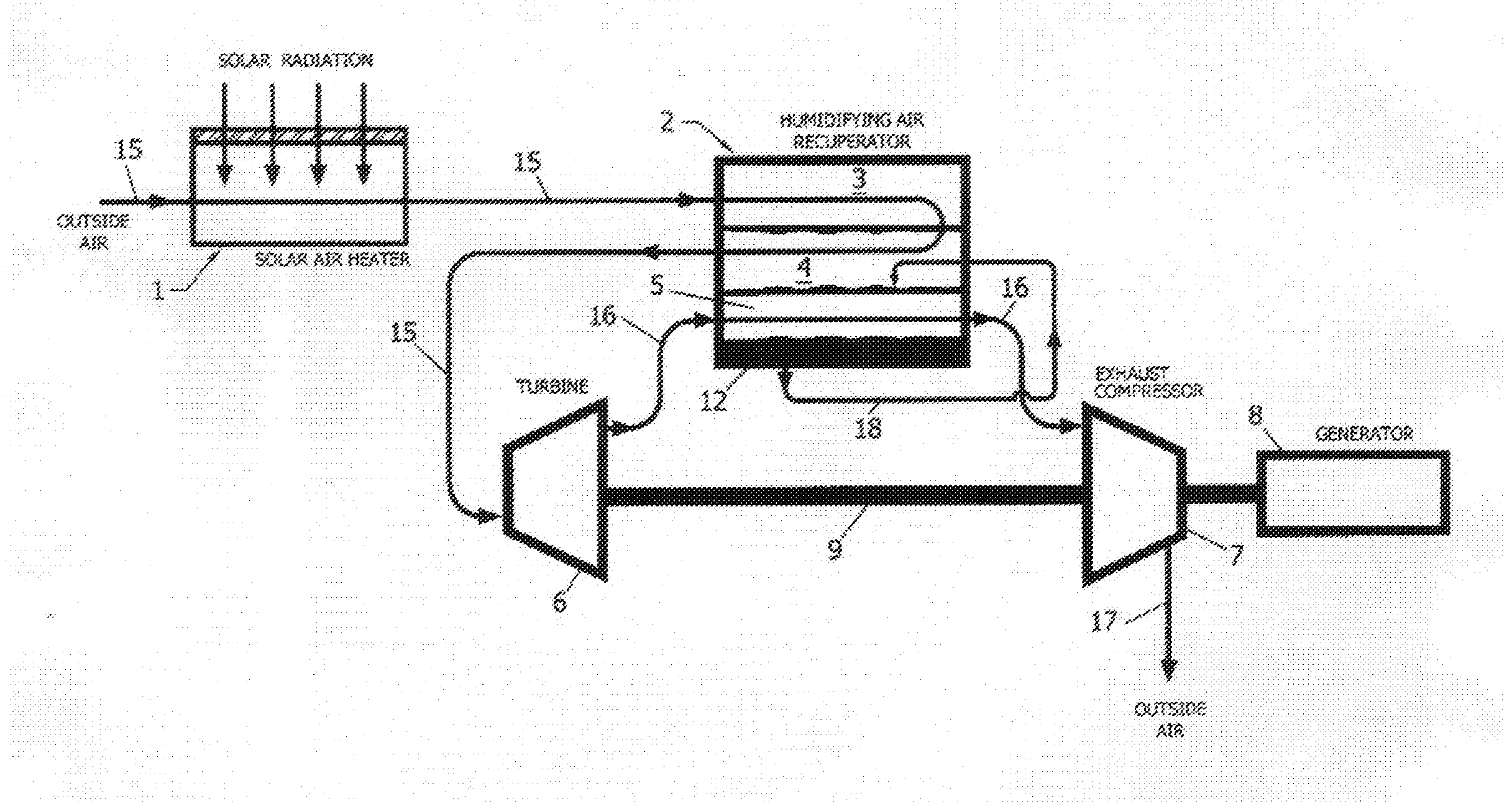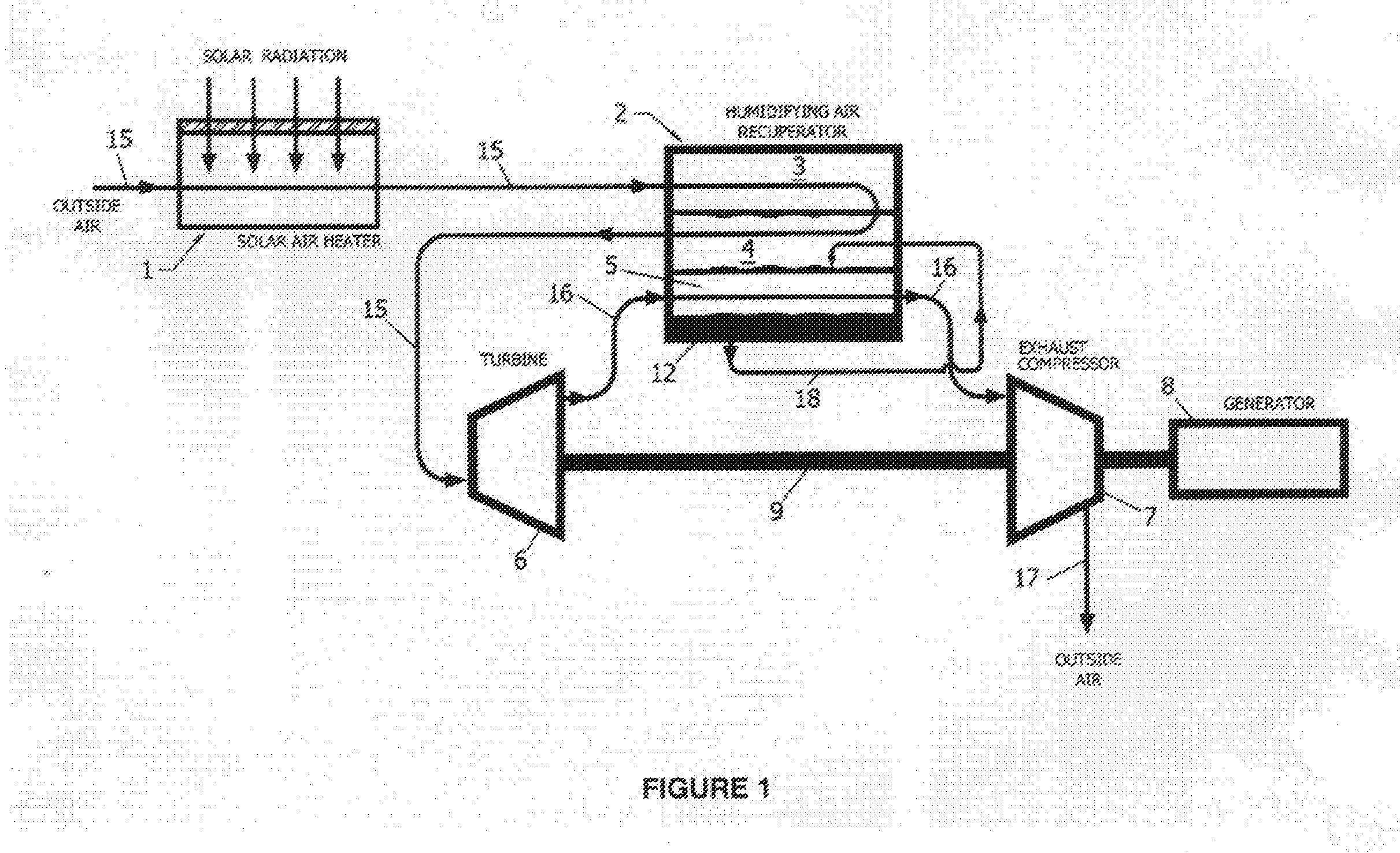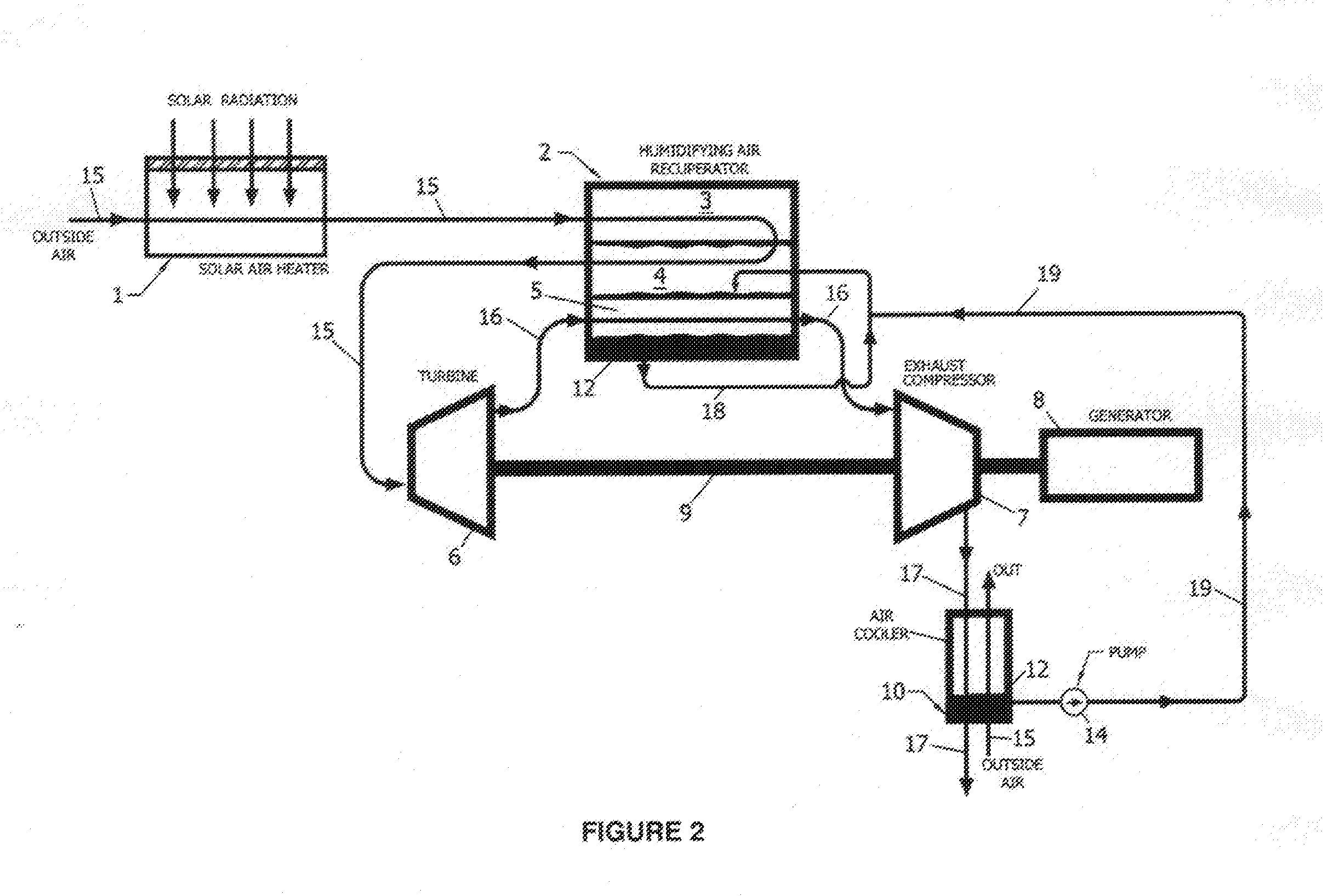Advanced solar thermally driven power system and method
a solar thermal and power system technology, applied in the direction of machines/engines, mechanical equipment, light and heating equipment, etc., can solve the problems of high cost, inefficiency, and large number of relatively expensive solar photovoltaic panels to be utilized, and achieve high absolute humidity, reduce pollution, and high volumetric flow rate
- Summary
- Abstract
- Description
- Claims
- Application Information
AI Technical Summary
Benefits of technology
Problems solved by technology
Method used
Image
Examples
Embodiment Construction
[0054]Below is a table of reference numbers and elements used in the description below.
ReferenceNumeralElement1Solar air heater2Humidifying air recuperator3Dry working channel4Wet working channel5Product channel6Gas turbine7Exhaust compressor8Electrical generator9Shaft10Air cooler12Condensate14Water pump15Airflow (outside or working air)16Product stream after the gas turbine17Product stream after the exhaust compressor18Water line for transport of the condensatefrom the product channel for wetting thewet working channels of the humidifyingair recuperator19Water line for transport condensate froman air cooler for wetting the wet workingchannels of the humidifying air recuperator20Auxiliary natural gas combustion chamber21Natural gas burner22Natural gas input23-27Valves28Heat accumulator30Solar desorber31Dry channel32Wet channel34Outside air for the solar desorber35Weak absorbent (desiccant)36Strong absorbent (desiccant)37Additional cooler38Condensing channel39Cooling channel40Outside...
PUM
 Login to View More
Login to View More Abstract
Description
Claims
Application Information
 Login to View More
Login to View More - R&D
- Intellectual Property
- Life Sciences
- Materials
- Tech Scout
- Unparalleled Data Quality
- Higher Quality Content
- 60% Fewer Hallucinations
Browse by: Latest US Patents, China's latest patents, Technical Efficacy Thesaurus, Application Domain, Technology Topic, Popular Technical Reports.
© 2025 PatSnap. All rights reserved.Legal|Privacy policy|Modern Slavery Act Transparency Statement|Sitemap|About US| Contact US: help@patsnap.com



